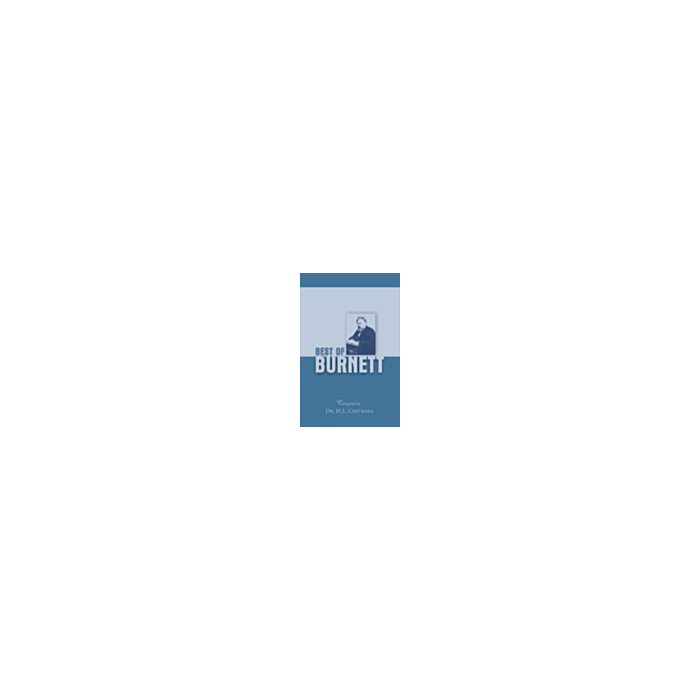The Best of Burnett
Share on social media
This book review is reprinted from the British Homoeopathic Journal Vol 82, Number 4, October 1993, with permission from Peter Fisher, Editor.
Reading Burnett can be infuriating. He apparently wrote some of his books in Hackney carriages between patients, and they are all too brief in the details of why any particular prescription was made. He did not after all want his readers to start prescribing for them selves. 'Beware of ladies with their little books', he wrote. He prescribed Conium for a lady who returned to belabour him with her umbrella. 'I'm not an old maid!' she declared having read in her little book who Conium is good for. We do not have our little books. We have John Henry Clarke's monumental Dictionary. Burnett used to dine with Clarke and tell him everything. The printable parts were duly noted and recorded against the homoeopathic medicines in the Dictionary, so that if we are stuck when reading Burnett on an obscure medicine we have recourse to the symptoms marked (B) in Clarke.
And obscure medicines they would have remained had not Burnett explored different ways of homoeopathicity, such as the organ affinity of Paracelsus and Rademacher, the effects of smallpox vaccination he termed 'vaccinosis', and the power of salt when potentized, which he divined for himself. Burnett was unusual among the British homoeopaths of his time, having studied in Vienna in addition to Edinburgh. He won a prize for anatomy. He experimented to make sure that he really understood what he was doing when he became a homoeopath. He wrote polemics to satisfy the doubtful 'allopaths'. He stares down at me sternly from my study wall, watch chain over his waistcoat, the bewhiskered paterfamilias, his person a little ahead of his step.
All this and more has been extracted and refurbished into an orderly whole by the scholarly H. L. Chitkara of New Delhi. After a biographical preface and some indexing, the main body of the work is in three parts, General and Clinical Observations, Materia Medica Notes and Therapeutics, and Case Reports. His works have been filleted, and served up cold for us to analyse. Actually to be able to find things like all the references to spleen or Ceanothus or that Platanus ichthyosis case, is very useful. His little books are not always available, and when they are, what one wanted to read was in a different volume. He wrote about 25 little books. The book is quite well bound for an Indian text, and about as free from misprints as the Grauniad on a bad day.
Dr Chitkara is an old hand at editing. He has even done a word index to the Synthetic Repertory, and worked on the New Delhi monthly Homoeopathic Heritage for years. So from this wealth of experience it is chasten ing to see what he really thinks of his own work.
'After I had finished writing ... as a final act of exorcising the magnificent obsession of completing this assignment out of my system, I read through one of the treatises of Burnett again. I confess, compared to the beauty, the wholeness and the brilliance of Burnett's individual works, my exercise of trifurcating his works to the present shape appears to be a cruel dissection amounting to mutilation, like the action of a botanist who smothers the fragrance, the colours and the wholesomeness of a flower in pursuit of his studies. As an expiation, I earnestly request the readers to go through at least one whole title of Burnett, in order to taste the real flavour.'
And I urge you to obtain this ingenious volume for study, and grasp the real clinical significance of the genius of Burnett.
FRANCIS TREUHERZ
British Homoeopathic Journal
Volume 82, Number 4, October 1993
| Subtitle | (Materia Medica, Therapeutics and Case Reports) |
|---|---|
| ISBN | 9788131901595 |
| Type | Hardback |
| Language | English |
| Publication date | 2010 |
| Pages | 734 |
| Publisher | B. Jain |

